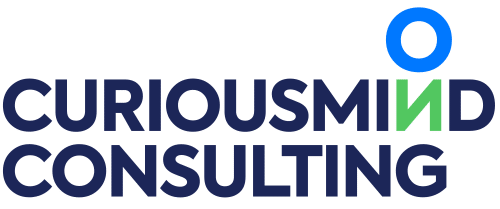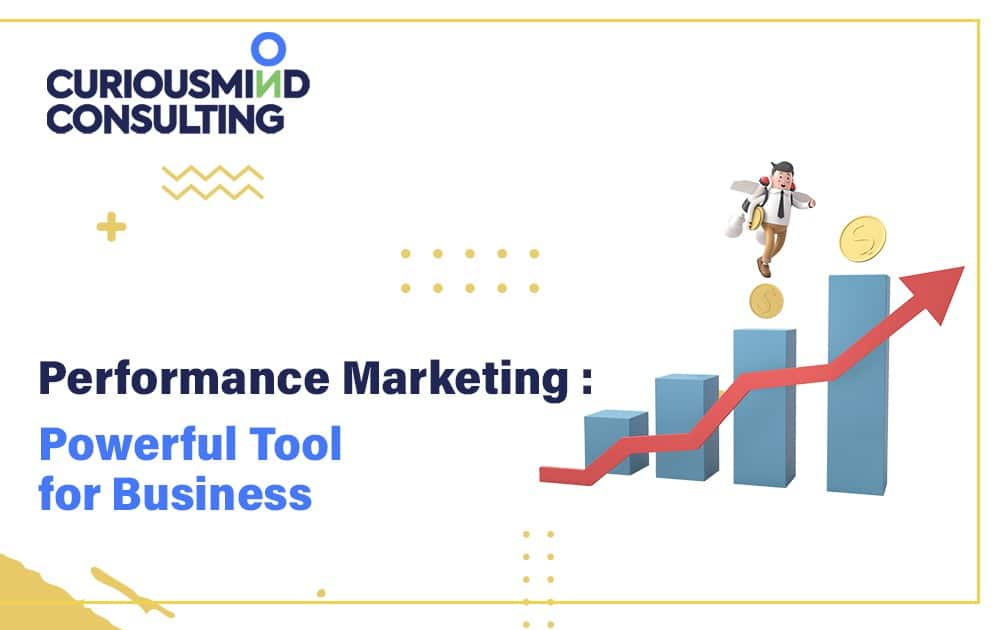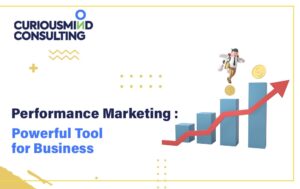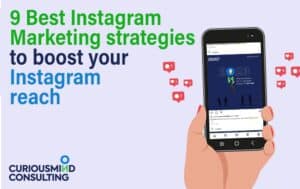Are you ready to unlock the true potential of your marketing efforts? Look no further than Performance Marketing! In this digital age, businesses aim to maximize their online presence. And it emerges as a game-changer. But what exactly is performance marketing, and how can it revolutionize your business?
Performance-driven marketing is a results-driven strategy that focuses on measurable outcomes. It goes beyond traditional methods, using data-driven insights. It harnesses the power of data to inform decision-making. Which optimizes campaigns and drives tangible results. It’s about maximizing your ROI by aiming for specific actions and desired outcomes.
In this approach of digital marketing, foucs is towards achieving predefined goals, such as increasing website traffic, generating leads, or driving conversions, reaching audiences through online channels like search engine marketing and social media advertising. Through these digital platforms, such as Meta, Tiktok and Google, businesses can target their ideal audience and engage with potential customers.
Curiousmind Consulting understands the complexities of performance marketing. We can help you navigate your marketing budgets towards this result-oriented approach. Our team of experts creates tailored strategies to drive business growth, primarily via Google and Meta ads. We optimize campaigns and deliver desired outcomes for your growth. Experience the need of performance marketing with us!
In the following sections, we’ll learn about the various key components of performance driven marketing. So get ready to gear your marketing efforts with us.
What is Performance Marketing?
Performance or Conversion marketing is a targeted and results-driven marketing strategy. It’s all about driving specific actions and achieving outcomes. In layman term, it focuses on achieving real results via online marketing.
Performance marketing, tracks and analyzes data to determine the success of campaigns. It allows businesses to cutomise their marketing efforts based on factual data and insights.
With conversions marketing, you invest for the actual performance driven strategies adn keep the fluff minimal. Instead of wasting resources on unproductive strategies, you invest in what works. This makes it a cost-effective approach for businesses of all levels.
The main principle here is accountability. Firstly, setting up of specific goals are very important. Goals such as the growth of website traffic or generating leads, getting online sales.
Secondly,tracking the progress toward those goals. This way, you can see the direct impact of your marketing efforts.
Performance marketing uses various online channels to reach your target audience. Whether it’s search engine marketing, social media advertising, or affiliate marketing. You can engage with your target customers at the correct time and in the correct place.
By applying strategies, your business can drive valuable leads and conversions. It permits you to focus your resources on the areas that bring the best results. With data-driven insights, you can optimize your campaigns and achieve better outcomes.
Types of Performance Marketing
There are various types of performance marketing. That your businesses can use to achieve their goals. Let’s take a look at the key types::
1. Search Engine Marketing (SEM):
Search Engine Marketing (SEM) is optimizing your website and running paid search ads. It is done So that the website appears in search engine results. It permits you to target specific keywords and reach targetted customers searching for your products or services.
2. Social Media Advertising:
Social Media Advertising is running targeted ads on social media platforms. There are various platforms such as Facebook, Instagram, and LinkedIn. It helps businesses to reach a specific audience, depending on demographics, interests, and behaviors.
3. Affiliate Marketing:
Affiliate marketing is collaborating with affiliates who promote your products or services on their platforms. You only pay them a commission when a referral from their site leads to a desired action, such as a sale or a sign-up.
4. Influencer Marketing:
Influencer marketing is using the reach and influence of social media influencers to publicize your brand or products. You must partner with influencers that align with your target audience. In this way, you can drive awareness, engagement, and conversions.
5. Display Advertising:
Display ads are those ads thar appear on websites and mobile apps. It targets users based on their browsing behavior, interests, or demographics. This is type of performance marketing which helps to increase brand visibility and drives traffic to your website.
6. Email Marketing:
Email marketing is that which allows you to nurture relationships with potential customers and existing clients. By sending personalized and targeted emails, you can drive engagement, conversions, and repeat business.
Each type of has its strengths and can be tailored to suit your specific business objectives. Curiousmind Consulting can fuel your business growth with expert services. Let’s excel together!
What is Not Performance Marketing
While it’s important to know what performance marketing is, it’s equally essential to clarify what it is not. Let’s shed light on what falls outside the realm of performance marketing:
1. Traditional Mass Advertising:
Traditional mass advertising, such as TV commercials or print ads, doesn’t fall under performance marketing. These methods lack the precise targeting and measurement capabilities that performance marketing offers.
2. Brand Awareness Campaigns:
Building brand awareness is valuable. But it doesn’t only align with the outcomes-driven nature of performance marketing. Performance marketing focuses on clear actions and measurable results rather than brand exposure.
3. Vanity Metrics:
Performance marketing doesn’t focus on vanity metrics like social media followers or website visits alone. It emphasizes tangible outcomes, such as lead generation, conversions, and revenue growth.
4. Spray-and-Pray Approach:
Spraying marketing everywhere, without focus or analysis, isn’t performance marketing. Performance-based marketing relies on data-driven insights to optimize ads and deliver desired outcomes.
Curious Mind Consultancy understands the importance of performance marketing. And how it can drive real business results. Our expert team can guide you through the complexities of performance marketing strategies. Ensuring that every marketing dollar you spend generates measurable returns. Let us help you harness the potential of performance marketing for your business’s success!
How does Performance Marketing works
The main principle of Performance Marketing is: Achieving measurable results through targeted strategies. Let’s read how is works:
1. Set Clear Objectives:
The first step of Performance marketing is defining specific goals and desired outcomes. Be it driving sales, generating leads, or driving website traffic. Clear objectives provide a roadmap for your marketing efforts.
2. Identify Key Performance Indicators (KPIs):
To track progress and measure success, performance marketing relies on relevant KPIs. These metrics include conversion rates, cost per acquisition (CPA), return on ad spend (ROAS), etc.
3. Precise Audience Targeting:
Performance marketing uses data to identify and target the right audience for your products or services. Segmentation, demographic analysis, and user behavior tracking enable precise targeting. Your marketing efforts reach most likely convert.
4. Strategic Channel Selection:
Performance marketing utilizes various digital channels. Such as search engines, social media platforms, and affiliate networks. Each channel offers unique opportunities. This will help to reach your target audience and drive desired actions.
5. Continuous Optimization:
A key aspect of performance marketing is ongoing optimization. A/B testing, data analysis, and campaign monitoring help performance optimization. Adjustments based on these insights can help you to maximize ROI.
6. Pay for Results:
Unlike traditional advertising models, performance marketing focuses on paying for actual results. Instead of paying for impressions or clicks alone. You can pay when a specific action is taken, such as a purchase or lead generation.
Performance marketing operates through clear objectives and precise audience targeting. It utilizes strategic digital channels and optimizes the delivery of ads based on measurable results. Performance marketing offers a results-driven approach, focusing on driving specific actions. It maximizes ROI and helps businesses effectively achieve their marketing goals.
How Performance Marketing is Different
Performance Marketing vs Digital Marketing vs Traditional Marketing
| Aspect | Performance Marketing | Digital Marketing | Traditional Marketing |
| Focus | Measurable results | Online presence | Broad awareness |
| Goal Orientation | Specific actions and outcomes | Brand exposure and reach | Brand building |
| Targeting | Precise audience targeting | Targeting based on demographics and interests | Broad audience targeting |
| Cost Structure | Pay for desired actions | Ad spend based on impressions or clicks | Fixed advertising costs |
| Data-Driven Approach | Utilizes data for optimization | Utilizes data for targeting and optimization | Limited data utilization |
| Campaign Optimization | Continuous A/B testing | Continuous optimization based on data and analytics | Limited optimization capabilities |
| Payment Model | Performance-based (Pay-per-action) | Various models (CPM, CPC, etc.) | Fixed pricing or media buying |
| ROI Focus | Maximises return on investment | Emphasizes maximizing online presence and engagement | Overall brand impact |
Performance marketing’s unique approach can provide businesses with a more targeted and cost-effective way to achieve specific marketing objectives.
Key Metrics to Measure your Performance marketing success
The key metrics you should focus on to assess your performance marketing efforts:
1.Conversion Rate:
This metric measures the percentage of visitors who take a desired action. Such as making a purchase, filling out a form, or subscribing to a newsletter. A higher conversion rate indicates effective targeting and persuasive messaging.
2. Cost per Acquisition (CPA):
CPA measures the average cost incurred to acquire a new customer or lead. It helps you understand the efficiency of your marketing spend. And the return on investment for each acquisition.
3. Return on Ad Spend (ROAS):
ROAS calculates the revenue generated for every dollar or rupee spent on advertising. It provides insights into the profitability. And helps optimize your budget allocation.
4. Click-Through Rate (CTR):
CTR measures the percentage of users who click on your ad or link compared to the number of impressions. A higher CTR shows the effectiveness of ad copy and creativity in driving engagement.
5. Return on Investment (ROI):
ROI assesses the overall profitability of your performance marketing efforts. It compares the revenue generated from each platform to the cost of investing, be it meta or google ads, providing a clear picture of the financial impact.
6. Customer Lifetime Value (CLV):
CLV estimates the total value a customer brings to your business over their lifetime. It helps you understand the long-term impact of your marketing efforts. And also ptimize customer retention strategies.
How to build your Performance Marketing Strategy
Building an effective performance marketing strategy requires careful planning and execution. Here are the key steps to create a successful performance marketing strategy:
1. Set Clear Goals:
Start by defining specific and measurable goals for your performance marketing campaign. These goals could include increasing website traffic, generating leads, driving conversions, or boosting sales.
2. Identify Target Audience:
Understand your target audience and create detailed buyer personas. Identify their demographics, interests, pain points, and online behavior to tailor your marketing efforts accordingly.
3. Choose Relevant Channels:
Select the digital channels that align with your target audience and goals. This could include search engine marketing (SEM), social media advertising, affiliate marketing, or email marketing.
4. Define Key Performance Indicators (KPIs):
Determine the KPIs that will measure the success of your performance marketing strategy. These may include conversion rates, click-through rates (CTR), return on ad spend (ROAS), or cost per acquisition (CPA).
5. Develop Compelling Ad Creative:
Craft engaging and persuasive ad copy, headlines, and visuals that grab attention and entice your target audience to take action. A/B testing can help optimize your creative elements for better performance.
6. Implement Effective Landing Pages:
Create dedicated landing pages that align with your ad objectives. Ensure they have a clear call-to-action, relevant messaging, and a user-friendly design to maximize conversions.
7. Track and Analyze Data:
Utilize tracking tools and analytics to measure the performance of your campaigns. Continuously monitor and analyze data to identify areas for improvement and make data-driven optimizations.
8. Optimize and Iterate:
Based on the insights gathered from data analysis, make necessary adjustments to optimize your creatives and ad objectives. Test different strategies, target segments, and ad variations to continually improve performance.
9. Monitor Budget and ROI:
Keep a close eye on your budget allocation and return on investment (ROI). Allocate resources to the channels and ad strategies that deliver the best results, and make adjustments as needed.
10. Seek Expert Guidance:
Consider partnering with a performance marketing agency like Curious Mind Consultancy. Their expertise can help you develop a comprehensive strategy, implement best practices, and drive optimal results.
By following these steps, you can build a strong performance marketing strategy that drives desired outcomes and maximizes your marketing investment.
Top Performance marketing channels
Performance marketing relies on utilizing the right channels to reach and engage with your target audience. Here are some of the top performance marketing channels. That can drive results from your marketing campaigns:
1. Search Engine Marketing (SEM):
SEM, including pay-per-click (PPC) advertising, lets you set up search and shopping advertising in search engine results. By targeting specific keywords, you can reach users searching for products or services like yours.
2. Social Media Advertising:
Platforms like Facebook, Instagram, Twitter, and LinkedIn offer powerful performance marketing opportunities. You can target specific demographics, interests, and behaviors. This will help you to reach your ideal audience and drive desired actions.
3. Affiliate Marketing:
Affiliate marketing involves collaborating with affiliates who promote your products or services. You pay them a commission for each sale or action generated through their referral. This channel can expand your reach and drive conversions.
4. Display Advertising:
Display advertising involves placing appealing banner advertising on websites, blogs, and mobile apps. Targeting options include demographics, interests, and browsing behavior. This allows you to reach a wide audience.
5. Email Marketing:
You can use your email subscriber list to engage your audience. You can engage with personalized and targeted emails. In email drip marketing, performance marketing aims to drive open rates and click-through rates. The ultimate goal is to increase conversions.
6. Retargeting:
Retargeting involves displaying advertising to users who have visited your website or engaged with your brand. By staying top of mind, you can encourage them to return and complete desired actions.
7. Native Advertising:
Native ads blend with the content of the platform. They appear on, providing a non-disruptive advertising experience. Native ads can be effective in capturing user attention and driving conversions.
By leveraging top-performance marketing channels, you can reach your target audience. Engage with them, and drive desired actions. Curious Mind Consultancy can help you identify the most suitable channels for your business. And create effective performance marketing strategies to maximize your results.
Pros and Cons of Performance Marketing
Performance marketing offers a range of benefits, but it also comes with its own set of challenges. Let’s explore the pros and cons of performance marketing:
Pros:
1. Measurable Results:
With Performance marketing, you can track and measure the effectiveness of your media marketing budgets. You can measure it with specific metrics. This data-driven approach provides insights into the success of your marketing efforts. And enables optimization for better performance.
2. Cost-Efficiency:
With ROI driven marketing, you pay for the desired actions or outcomes achieved. Such as conversions or leads. This pay-for-performance model ensures that your marketing budget is allocated. By optimizing your return on investment.
3. Precise Targeting:
Performance-based marketing enables precise audience targeting. By usage of data and analytics, you can reach the right audience. With personalized messages, increasing the chances of driving meaningful actions and conversions.
4. Flexibility and Adaptability:
Performance marketing allows for real-time adjustments and optimization. You can adapt your campaigns based on the insights gathered. From time to time improve your strategies to maximize results.
5. Scalability:
Performance marketing can be scaled up or down based on your business needs and budget. You can expand your budgets to reach a larger audience. Also, you can narrow them down to target specific segments.
Cons:
1. Initial Investment:
The pay-for-performance model in performance marketing proves cost-efficient over time. Yet, it may require an initial investment. This investment goes towards setting up tracking systems and optimizing platform spends. It also includes experimenting with different strategies, investing in a tech stack, tools for attribbution, usability tests, customer surveys, etc.
2. Data and Analytics Complexity:
Effective performance marketing relies on robust data analysis and interpretation. Managing and interpreting large sets of data can be complex. It may require expertise or tools to derive meaningful insights.
3. Competitive Landscape:
Performance marketing is adopted, resulting in increased competition. You need to refine your strategies. And also optimize your campaigns to stay ahead in the competitive landscape.
4. Potential for Fraud:
Due to the pay-for-performance nature, there is a risk of fraudulent activities. Such as fake leads or clicks. Implementing robust tracking and fraud prevention measures is essential to mitigate this risk.
5. Limited Brand Awareness:
Performance marketing focuses on specific actions rather than broad brand awareness. When brand recognition is the primary goal, a holistic marketing approach is recommended. This involves combining performance marketing efforts with other comprehensive strategies.
Here’s a summary of the pros and cons
| Pros | Cons |
| Measurable Results | Initial Investment |
| Cost-Efficiency | Data and Analytics Complexity |
| Precise Targeting | Competitive Landscape |
| Flexibility and Adaptability | Potential for Fraud |
| Scalability | Limited Brand Awareness |
Summary
In conclusion, performance marketing is a results-driven approach that offers various advantages. Including measurable results, cost-efficiency, precise targeting, and scalability, it also respects privacy policy. While it has its limitations, such as initial investment and data complexity. These can be solved with the right expertise and tools.
To achieve the full possibilities, partner with Curiousmind Consulting (CMC). Our expertise in data analytics, and optimization ensures strategic campaign planning. We implement and tailor for maximum results.
With CMC as your trusted partner, navigate the competitive environment confidently. Tackle potential fraud risks and achieve exceptional outcomes. Refrain from setting low quality targets in your marketing efforts. Choose Curious Mind Consultancy for top-notch performance marketing solutions. Lift your business toward success with our expertise.
FAQs
1. What is an example of performance marketing?
An example of performance marketing is an e-commerce business running a pay-per-click (PPC) campaign on search engines. They set goals like driving online sales and only pay when users click on their ad and make a purchase. The campaign’s performance is tracked through metrics. Like clicks, conversions, and cost per acquisition (CPA). This direct measurement helps optimize the drive for improved results.
2. Is performance marketing an SEO?
No, performance marketing is different from SEO. Performance marketing focuses on driving specific actions and achieving measurable outcomes. This is done through targeted strategies and paid advertising.
SEO, on the other hand, aims to improve a website’s visibility and organic search rankings. While they can complement each other, they are separate components of digital marketing.
3. What makes up performance marketing?
Performance marketing is comprised of targeted strategies and tactics. This focuses on driving specific actions and achieving measurable results. It includes elements such as data-driven insights, precise audience targeting, cost-per-action payment models, tracking and analyzing key performance metrics, continuous optimization, and a strong emphasis on return on investment (ROI).
4. Is performance marketing the future?
- Yes, performance marketing is the future of marketing.
- It offers a results-driven approach.
- Focuses on measurable outcomes.
- Optimizes campaigns based on data and analytics.
- Maximizes ROI and adapts to consumer behaviors.
- Provides accountability and tangible results.
- Expected to shape the future of marketing practices.
5. What are the advantages of performance marketing?
The advantages of performance marketing include:
1. Measurable Results:
Performance marketing allows you to track and measure the effectiveness of your campaigns. Provides clear insights into where the customer acquisition is more effective, including calculation of Lifetime values, average order values, etc.
2. Cost Efficiency:
With performance marketing, you pay for desired actions or outcomes. An expert performance marketing agency also ensures that your marketing budget is allocated to the performing platforms and tactics.
3. Precise Targeting:
An experienced team designs your messages and enables your brand to reach the right audience with advanced techniques, increasing the chances of driving meaningful actions and conversions.
4. Flexibility and Adaptability:
Performance-oriented marketing allows for real-time adjustments and optimization based on data and insights. It helps you to Maximize your campaign’s performance.
5. Scalability:
Conversion based marketing can be scaled up or down based on your business’s needs and budget. It accommodates growth and changes in demand.
6. Accountability:
Performance marketing focuses on delivering specific results. It ensures transparency and accountability in your marketing efforts.
7. Optimization Opportunities:
It analyzes data and makes data-driven decisions. It also provides opportunities for improving and optimizing your campaigns for better results.
Curiousmind Consulting is an evolving and rapidly progressing performance based marketing agency. We continuously work with new challenges and test and experiment to deliver and scale where we find stable results, be it Google ads, meta ads, full-funnel email marketing campaigns, etc. We understand the nuances of what it takes to initiate performance markeitng and do needful audits before jumping into spending a business owner or e-commerce operator’s money on online marketing methods. Web development, landing page audits are a part of this powerful marketing method.
Feel free to book a call with our expert.








